I have a Login screen which consists of 2 EditTexts for Username and Password. My requirement is that on orientation change , input data(if any) in EditText should remain as it is and a new layout should also be drawn. I have 2 layout xml files- one in layout folder and other in layout-land folder. I am trying to implement following 2 approaches but none of them is perfect:
(1) configChanges:keyboardHidden - In this approach, I don't provide "orientation" in configChanges in manifest file. So I call setContentView() method in both onCreate() and onConfigurationChanged() methods. It fulfills both my requirements. Layout is changed and input data in EditTexts also remains as it is. But it has a big problem :
When user clicks on Login button, a ProgressDialog shows until server-response is received. Now if user rotates the device while ProgressDialog is running, app crashes. It shows an Exception saying "View cannot be attached to Window." I have tried to handle it using onSaveInstanceState (which DOES get called on orientation change) but app still crashes.
(2) configChanges:orientation|keyboardHidden - In this approach, I provide "orientation" in manifest. So now I have 2 scenarios:
(a) If I call setContentView() method in both onCreate() and onConfigurationChanged(), Layout is changed accordingly but EditText data is lost.
(b) If I call setContentView() method in onCreate() , but not in onConfigurationChanged(), then EditText data is not lost but layout also not changes accordingly.
And in this approach, onSaveInstanceState() is not even called.
So I am in a really intimidating situation. Is there any solution to this problem? Please help. Thanx in advance.
